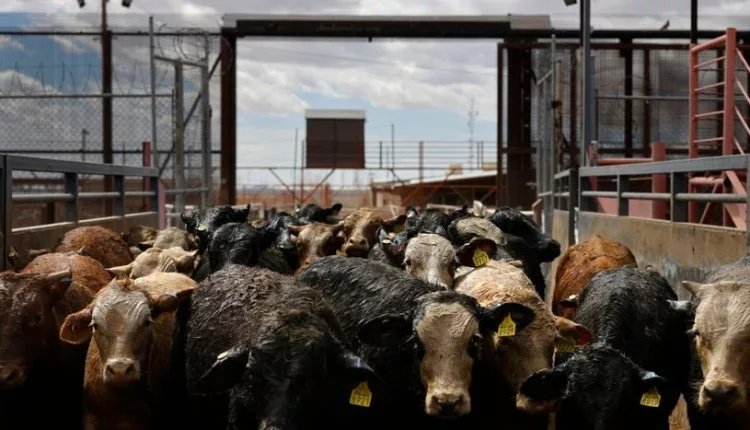
American and Mexican Cattle Ranchers Use Economic Integration as a Science, Separate from Politics
TL/DR –
A collaborative cross-border cattle breeding program between Mexico and the US is being deemed a “model of perfection” due to the use of superior genetics and cutting-edge technology. The program involves Mexican cattle born from American bull semen and subsequently herded across the border. Once on US soil, the cattle — nicknamed “Mexican-Americans” — are sold to US brokers and the meat ends up on dinner tables across the country.
SANTA TERESA, N.M. — West of El Paso in New Mexico’s desert, hundreds of Mexican cattle are herded by a lone vaquero across the U.S.-Mexico border, in what some are calling a “model of perfection”.
Daily, trucks filled with cattle leave Santa Teresa for feedlots in Oklahoma, Kansas, Nebraska, California and Colorado. They’re eventually slaughtered and packaged for grocery stores and dinner tables throughout the United States and parts of Mexico. This process is known as “gate to plate,” says David Anderson, professor and livestock expert at Texas A&M.
The science behind the cattle
The success of Mexican cattle in the U.S. begins with artificial insemination and embryo transfer (AI and ET) from US bulls. These advanced breeding practices produce calves with superior genetics, meeting high demand on both sides of the border. Annually, about 1 million cattle from Mexico cross into the United States through this collaborative process.
Rancher disparities
Due to infrastructure and financial constraints, Mexican cattle ranchers, unlike their American counterparts, are unable to produce the ideal weight of over 1,200 pounds for their herds. This has led to a growing partnership between Mexican and Texas cattle ranchers, which contributes to closing this gap and heightening industry efficiency.
Labor shortage
An overlooked issue amid the ongoing immigration debate is a growing labor shortage in Texas and across the country. This shortfall impacts the cattle industry significantly, with a large demand for farm labor met by H-2A positions for temporary Mexican guest workers.
This cross-border collaboration offers a beneficial solution to economic challenges and sheds an optimistic light on the implications of such partnerships. “By cooperating with one another, openly and candidly, we can also work toward solving other problems like migration,” says Alvaro I. Bustillos, board chairman and president of the Chihuahua Cattlemen’s Association.
As U.S. and Mexico officials wrangle over complex issues from immigration to fentanyl, cattle ranchers from both countries have found a way to turn economic integration into a science apart from politics. This has resulted in a highly efficient and beneficial partnership, providing high-quality beef to the U.S. and economic prosperity to Mexican ranchers.
—
Read More US Political News
